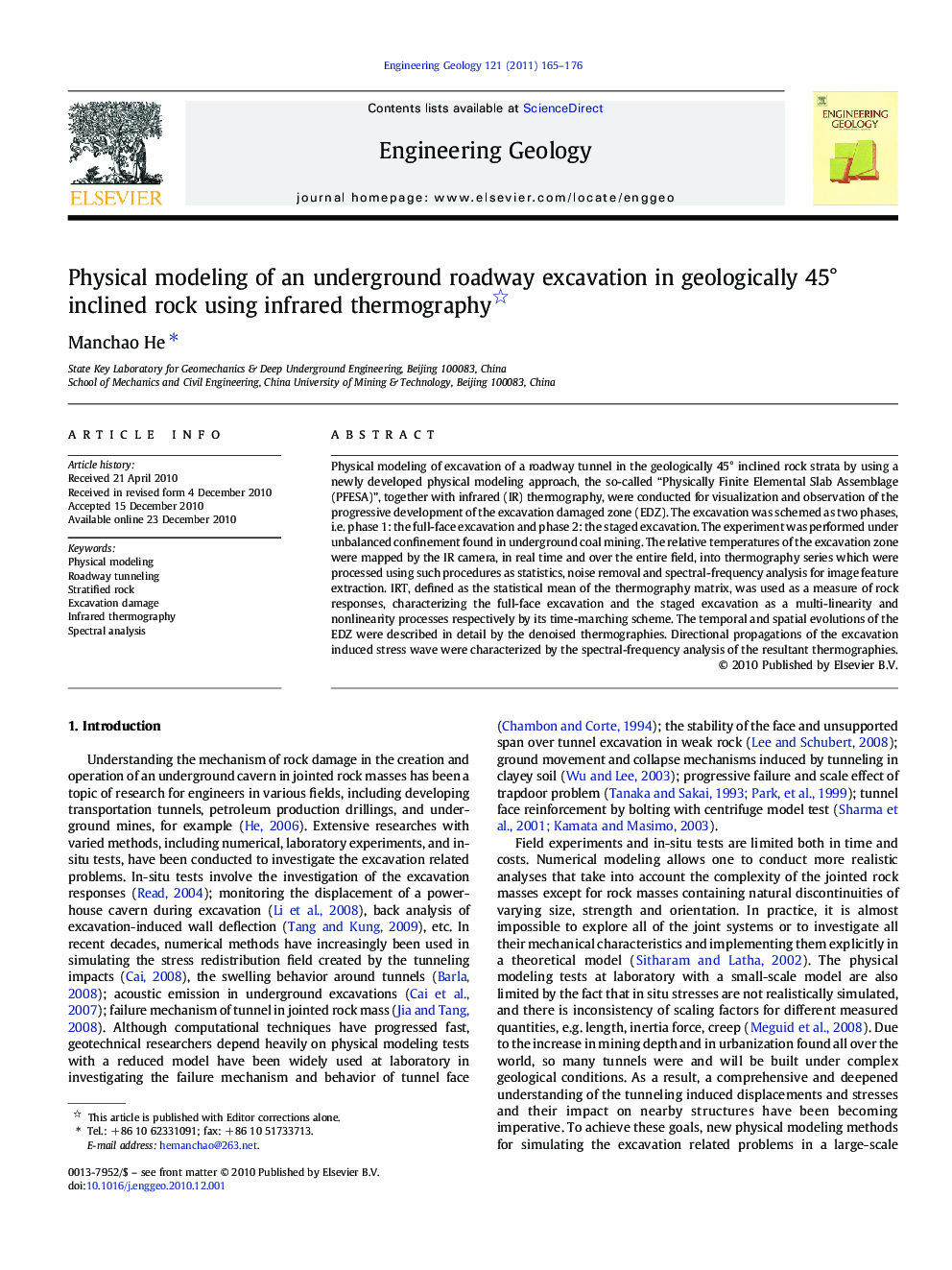| Article ID | Journal | Published Year | Pages | File Type |
|---|---|---|---|---|
| 4744170 | Engineering Geology | 2011 | 12 Pages |
Physical modeling of excavation of a roadway tunnel in the geologically 45° inclined rock strata by using a newly developed physical modeling approach, the so-called “Physically Finite Elemental Slab Assemblage (PFESA)”, together with infrared (IR) thermography, were conducted for visualization and observation of the progressive development of the excavation damaged zone (EDZ). The excavation was schemed as two phases, i.e. phase 1: the full-face excavation and phase 2: the staged excavation. The experiment was performed under unbalanced confinement found in underground coal mining. The relative temperatures of the excavation zone were mapped by the IR camera, in real time and over the entire field, into thermography series which were processed using such procedures as statistics, noise removal and spectral-frequency analysis for image feature extraction. IRT, defined as the statistical mean of the thermography matrix, was used as a measure of rock responses, characterizing the full-face excavation and the staged excavation as a multi-linearity and nonlinearity processes respectively by its time-marching scheme. The temporal and spatial evolutions of the EDZ were described in detail by the denoised thermographies. Directional propagations of the excavation induced stress wave were characterized by the spectral-frequency analysis of the resultant thermographies.
► A new physical modeling approach Physically Finite Elemental Slab Assemblage (PFESA) is presented. ► PFESA uses infrared (IR) thermography to study development of the excavation damaged zone (EDZ). ► Temperatures from excavation zone are mapped by a IR camera, in real time over the entire field. ► Induced stress waves were characterized by the spectral-frequency analysis of the thermographies.
